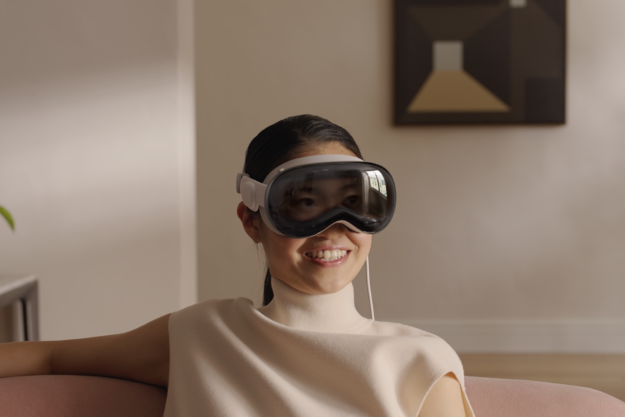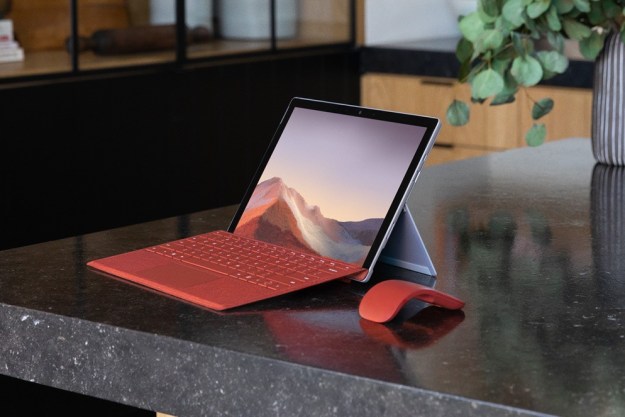The 2021 ViveCon event saw HTC announce two new generations of virtual reality (VR) headsets, one of them being an important upgrade to the Vive Pro, the Vive Pro 2. At first glance, these models look fairly similar, and we know that Vive fans out there want to know all the details before they decide whether or not to upgrade. Let’s go over everything and what — in our experience — is the best headset for the money.
Note: HTC is also discontinuing the Vive Pro and no longer sells it directly. You may still be able to find it at a third-party seller if you want to save money, but this piece is more geared toward those wondering if upgrading from a currently-owned Pro to the Pro 2 is worth it.
Design

For the Pro 2, Vive left the design of its headset largely unchanged. Both models still include the same ergonomics, adjustable straps, and cable management options when hooking up the headset to your PC or laptop. While we weren’t convinced that the Pro model offered enough value for its price compared to the original Vive, there’s no doubt that the sturdier, padded design and adjustable, built-in headphones were a noticeable quality-of life-improvement. The Pro 2 benefits from all of that — and both models offer IPD (inter-pupillary distance) physical adjustments between 57mm and 72mm. Both also use USB-C connections.
The only notable difference here is a cosmetic change to the faceplate, which now comes in black by default instead of blue. Not exactly a decision to sway any buyers one way or the other.
Display quality and field of view

Inside, the Vive Pro 2 receives a marked upgrade compared to the Vive Pro. The first Pro model comes with 1400 x 1600 resolution per eye display for a combined resolution of 2800 x 1600, with a maximum refresh rate of 90Hz and a 110-degree field of view.
The Pro 2 improves on that with a 2448 x 2448 resolution per eye (4896 x 2448 total), a 120-degree field of view, and a 120Hz refresh rate — all much better specs for experiencing everything a VR game has to offer and the potential to make issues with nausea better thanks to greater overall clarity. The Vive Pro 2 also has some software improvements under the hood, including the 2nd-generation version of SteamVR tracking and improved sensors.
The Vive Pro 2 is undoubtedly the more detailed headset (its screens offer the greatest headset resolution in the consumer space), and they do use LCD panels rather than the OLED ones in the original Vive Pro. That should mean that, though they’re faster and more detailed, they may not offer the same inky blacks and infinite contrast ratio of the original Pro screens.
Note that despite the jump in improvement, HTC did not change the PC recommended specifications for the Vive Pro 2. That means you don’t have to upgrade your computer when buying the Pro 2. At least not right away (more on this below).
Audio
Audio is another aspect that HTC made relatively few changes to when designing the Pro 2. Both the Vive Pro and the Pro 2 come with:
- Hi-Res certified headset with USB-C analog signal.
- Hi-Res certified headphones that are removable if necessary.
- Support for high impedance headphones, which makes it more likely that your gaming headphones will be supported (if you can fit them on the headset).
Using the Vive wireless adapter
If you have been using the wireless adapter on your Vive Pro or are interested in the wireless experience, you may be wondering how it works on the Vive Pro 2.
The current model of the Vive wireless adapter will function with the Vive Pro 2 but with limited capabilities, so you won’t be able to enjoy the fully upgraded specs of the new model. The adapter will limit you to a 1224 x 1224 resolution per eye on the Pro 2 and a 90Hz refresh rate, which is even lower than the wired Vive Pro specs. Vive has reported that it is working on a wireless firmware upgrade to reach a 1632 x 1632 resolution, but no timeline has been given for the release of a new adapter or firmware update thus far.
If you are interested in Vive’s wireless adapter, it can handle performance quite well but also requires significant processing power to avoid degradation problems. We suggest bumping up your specs for wireless compared to the baseline requirements we discuss below, preferably to a recent generation Intel Core i7/i9 or an AMD Ryzen 7/9 processor.
Performance and requirements

As we mentioned, HTC has left the PC requirements for the Vive Pro 2 largely untouched, with some small changes. Here are the details behind what you’ll need:
Processor: An Intel Core i5-4590 or AMD Ryzen 1500 equivalent or greater.
Graphics: The basic GPU recommendation is the Nvidia GeForce GTZ 1060 or the AMD Radeon RX 480. However, here HTC makes a new distinction: If you want to use Full Resolution mode for getting the resolution as high as possible for the games that support it, you will need at least a GeForce RTX 20 Series or an AMD Radeon 5000, which include this support.
Memory: 8 GB RAM or more
Video out: Both models require at least DisplayPort 1.2. But this is another spot where HTC advises those interested in the Full Resolution mode to make sure they are using at least DisplayPort 1.4.
USB ports: USB-C 3.0 or newer
Operating system: Windows 10
Pricing

The real pricing question here concerns the Vive Pro 2: Nominally, the Pro 2 has an MSRP that’s $200 higher than the Pro at $799 and is available for preorder right now. If you want to upgrade from your current Pro model, you’ll have to pay significantly more to do it compared to the cost of your original headset.
The original Vive Pro headset is currently being treated like a limited edition now that it’s no longer being made, so instead of the $599 MSRP, it’s now selling for anywhere from $700 to $1,200 depending on the supplier — not exactly a viable alternative for those who are looking for a brand new HTC headset.
Conclusion: The Vive Pro 2 is a superior — but expensive — headset
The Pro 2 is a clear upgrade when it comes to performance: The resolution, refresh rate, and field of view all received significant upgrades that benefit the latest VR games, especially if you have the specs to match. If this is your first VR headset, or you are moving to HTC from a different brand, we recommend that you choose the Vive Pro 2.
If you have the previous Vive Pro and are wondering about an upgrade, the choice is more difficult. Paying around $700 for a headset, plus accessories, may be a lot to ask for an upgrade that has better display specs but doesn’t change the design or audio quality. Ultimately, it’s about what’s most important to you and your budget.
Editors' Recommendations
- Quest Pro 2: What we know about Meta’s next premium VR headset
- Vision Pro 2: everything we expect from the future of Apple’s headsets
- Gemini Advanced vs. Copilot Pro: which is the better deal?
- Why the future of the Quest depends on the Vision Pro
- Apple’s Vision Pro headset officially launches on February 2




